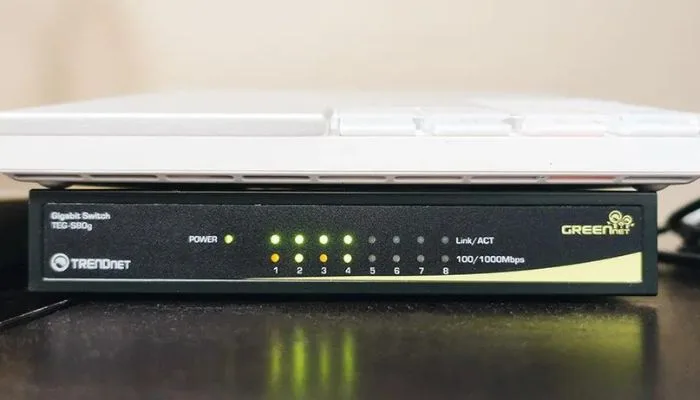Differences Between Hub and Switch are crucial for anyone dealing with network management. While hubs are simple and cost-effective, switches provide efficient data transmission and enhanced security. Your choice between the two will depend on your network’s needs, budget, and complexity.
What is a Hub?

A hub is a basic networking device that connects multiple devices in a network. It operates at the physical layer of the OSI model and simply broadcasts incoming data to all connected devices. This means that when a device sends data to a hub, it is received by all devices connected to that hub, regardless of the intended recipient.
When to Choose a Hub
Sometimes, it might make sense to opt for a hub over a switch, particularly in smaller or more basic network setups. Here are some scenarios where using a hub could be appropriate:
- Cost Constraints: Hubs are more budget-friendly, making them suitable for organizations with limited resources.
- Simple Networks: In small, uncomplicated networks where speed and security are not a primary concern, hubs can suffice.
What is a Switch?

A switch, on the other hand, is a more advanced networking device that operates at the data link layer of the OSI model. Unlike a hub, a switch intelligently directs incoming data to the specific device it is intended for. It does this by using MAC addresses to identify the destination device and creating a direct connection between the sender and the receiver.
When to Choose a Switch
Switches are typically the preferred choice in modern networking scenarios. Here are some instances where a switch is the better option:
- Network Efficiency: In larger networks or environments where efficient data transmission is crucial, switches outperform hubs.
- Security: Switches enhance network security by isolating data between devices.
- Complex Setups: For networks that demand greater complexity and fine-tuned control, switches offer more features.
Differences Between Hub and Switch
Switches, on the other hand, are more complex network devices that function at the data link layer. Switches, as opposed to hubs, establish dedicated connections between devices, which implies that each device has its own dedicated bandwidth. As a result, communication between devices becomes faster and more efficient.
Another significant distinction is that switches can filter and forward data packets based on the MAC addresses of the devices to which they are attached. This improves security and eliminates unneeded traffic from being sent to all network devices.
In summary, while hubs and switches both connect devices in a network, switches provide superior performance, security, and efficiency than hubs. If you’re setting up a network, it’s best to use a switch to ensure seamless and dependable communication between devices.
Key Differences:
- Data Transmission: A hub broadcasts data to all connected devices, while a switch sends data only to the intended recipient.
- Bandwidth: Hubs share the available bandwidth among all connected devices, which can lead to slower network speeds. Switches, on the other hand, provide dedicated bandwidth to each connected device, resulting in faster and more efficient data transmission.
- Collision Domain: Hubs create a single collision domain, which means that when two devices transmit data at the same time, a collision occurs and the data is corrupted. Switches, however, create separate collision domains for each connected device, preventing collisions and ensuring reliable data transmission.
- Network Security: Hubs offer no security features and are vulnerable to unauthorized access. Switches, on the other hand, provide features such as MAC address filtering and VLANs, enhancing network security.
Table to highlight the key Differences Between Hub and Switch:
| Aspect | Hub | Switch |
|---|---|---|
| Layer in OSI Model | Physical Layer (Layer 1) | Data Link Layer (Layer 2) |
| Data Transmission | Broadcasts data to all connected devices | Sends data only to the intended recipient |
| Filtering | Lacks intelligence to filter data packets | Filters and forwards data based on MAC addresses |
| Network Efficiency | Inefficient, prone to collisions | Efficient, reduces network congestion |
| Network Security | Offers limited security | Enhances security by isolating data |
| Cost | Cost-effective | Higher cost, especially for managed switches |
| Configuration Complexity | Simple setup | May require more complex configuration |
While hubs and switches may seem similar, their differences are crucial in determining their functionality and performance in a network. Hubs are basic devices that simply broadcast data to all connected devices, while switches are more advanced devices that intelligently direct data to the intended recipient. Switches offer faster data transmission, dedicated bandwidth, separate collision domains, and enhanced network security. Therefore, if you are looking for a networking device that provides better performance and security, a switch is the way to go.


